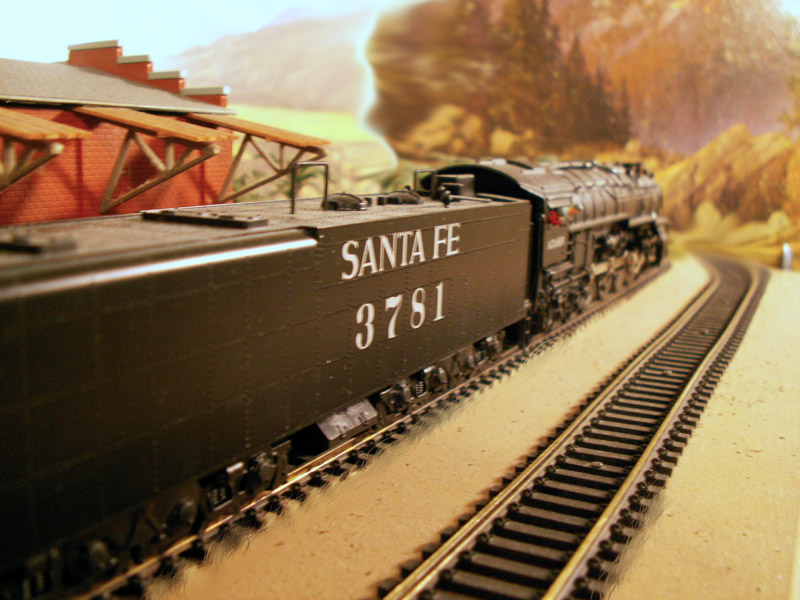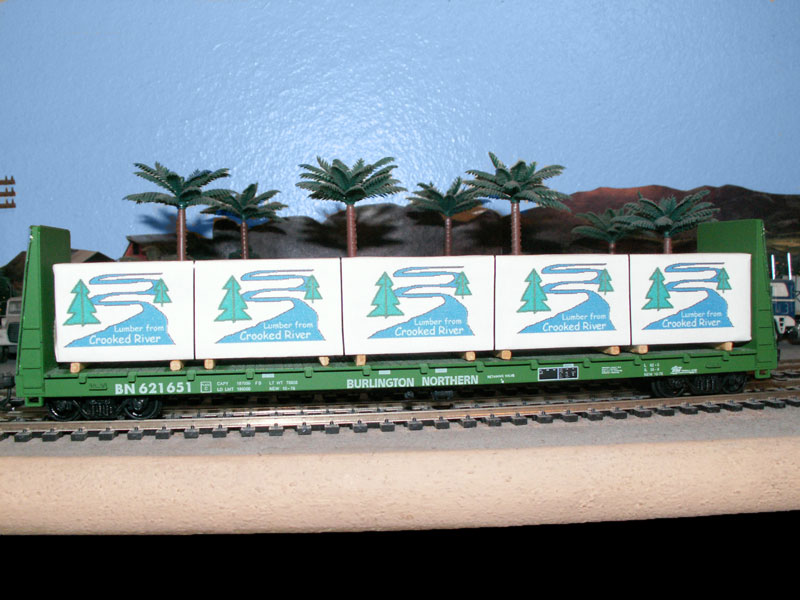Locomotive Roster for the Lone Wolf and Santa Fe Railroad
All freight locomotives are part of the motor pool and are assigned trains based on the car card system's supply and demand. The main job listed below is only their primary job. Units from BNSF and Santa Fe, Union Pacific and Southern Pacific head up lashes of trains for their respective railroads. (The Southern Pacific and Union Pacific has trackage rights through the pass). Additional helper units are assigned to each train based on the trains requirements. If the UP needs additional power and there are BNSF units available they use them and vise versa.
Wolf Mountain is one mean hill and there is never enough muscle available with out helpers and pushers. East bound trains always require more power to get up the hill. West bound trains don't need as much because it is downhill most of the way and what grade there is is, is nothing compared to the east bound side which climbs the 4,000 foot step, up from the Pacific Plate to the North American Plate, making it one of the steepest main line passes in the nation.Because of gear ratios and other differences, powered locomotives are only run with other powered locomotives from the same brand or dummy units. The Athearn loco's are nicely detailed with after-market parts and are very dependable and economic. The Atlas locomotives are vintage late 1970's but can still be found new in the box on the internet. They run great at very slow speeds, much slower than the Athearn's. They make the best locos for switching urban areas where driving slow looks so cool. The Walther's units are a good cross between the other two. They look great and run great. I don't know why nobody else has them. All locomotives have Kadee couples. Most have #5's. Units with snowplows have #26's in the front. Some units requires under or over set shanks. Use the height gauge to check proper height. I have tried some other brands of couplers and use them on rolling stock sometimes, however the plastic couplers don't last long mounted on the locomotives due to the tougher stresses that locomotives encounter during switching etc.
All locomotives are in some stage of being super detailed and weathered. Standard details are M.U.'s, snow plows, radio antennas and sun visors. Other details on some units include grab irons, air conditioners, and of course the crew. Handrails are painted and mounded grab irons are highlighted with a line of the proper color. Air intakes and exhaust are weathered. Older locomotives are weathered with more dirt, rust, and grime, etc., see rolling stock page for weathering techniques.
A quartet of Southern Pacific tunnel motors waits under the arrowhead.
A trio of Santa Fe SD40-2 locomotives with one unit in the Kodachrome livery at the front of a lumber train arriving in southern California
A group of Santa Fe C44-9w is lead by a Burlington Northern Santa Fe locomotive
Amtrak locomotive #32 leads the Southwest Chief across the southern California foothills.
A pair of old F45s and an even older SD9 still see service on the line.
A trio of B40-8W locomotives in Warbonnet livery
An assorted group of Southern Pacific GP units

The San Bernardino Historic Society owns and operates this beautifully restored 4-8-4 Northern steam engine. In it's hay day it used to pull the fastest passenger trains between Chicago and Los Angeles, then saw many years of service as a helper on the pass. Now it is used for rail days festivities pulling luxury passenger cars once again.
|
|
|
|
|
|
|
|
|
|
|
|
|
|
| Berdoo |
|
|
|
|
Sand Mountain | High Desert | Barstow |
Check out our items for sale!




